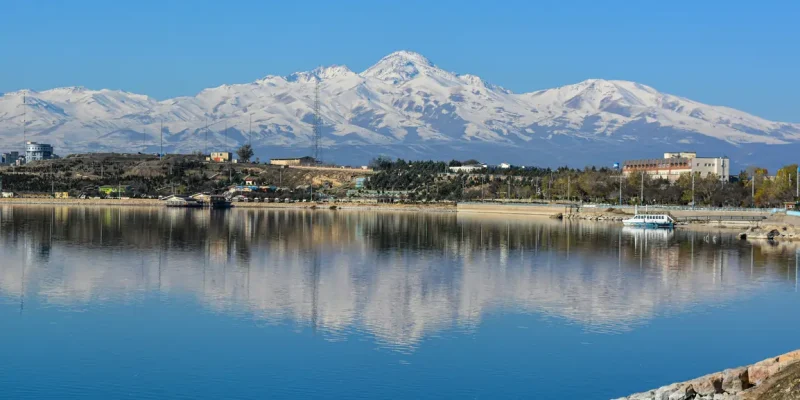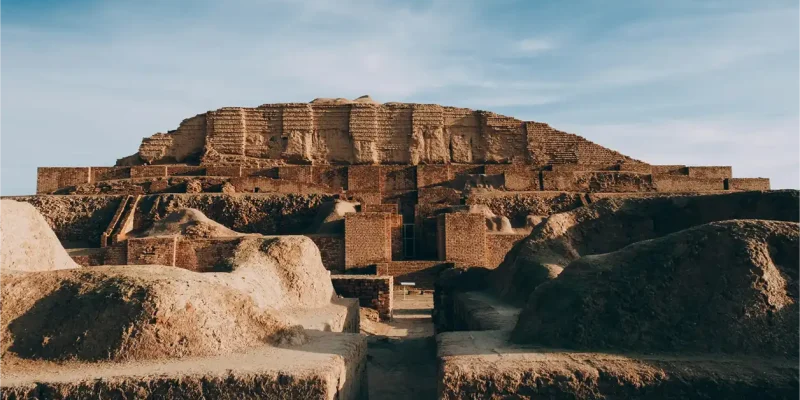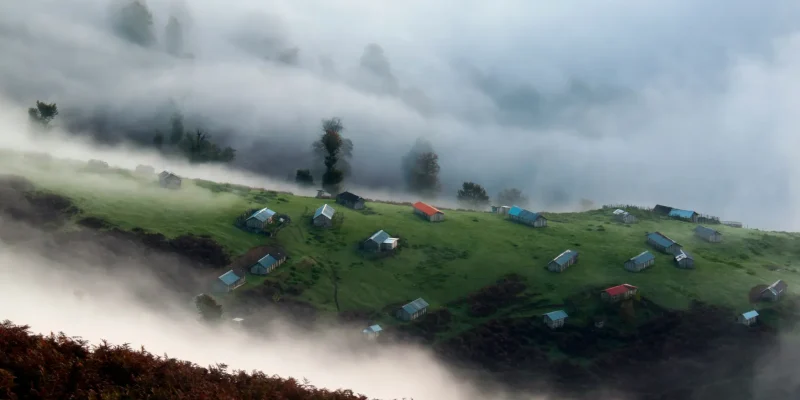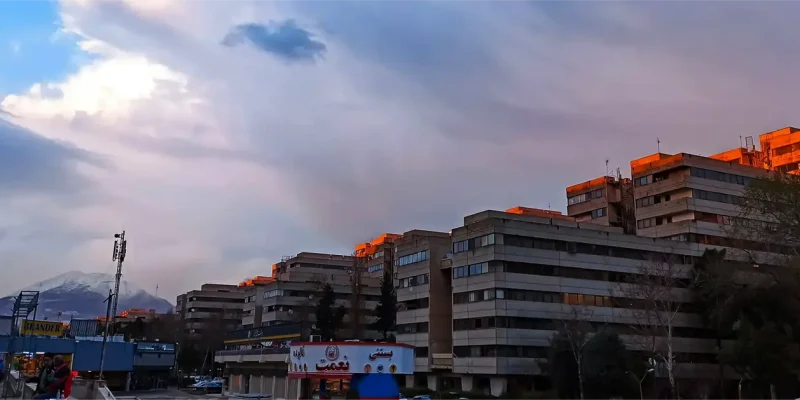Iran Isfahan often called the crown jewel of old Persia, shows off its rich culture and beautiful buildings. This charming city in Iran sits in the middle of Isfahan province mixing history, art, and Persian design in a way that fascinates visitors and history buffs. The weather in Isfahan, Iran changes with the seasons adding to the city’s timeless appeal and making it a popular place to visit. Isfahan matters for more than just its good looks – it has played a big part in Iran’s history and culture.
This article will examine Isfahan’s place in history looking into its past and the city’s renowned Persian buildings such as Naqsh-e Jahan Square, the intricate charm of Sheikh Lotfollah Mosque, and the impressive Khaju Bridge.
A thorough study of Isfahan’s buildings and city layout reveals a place built with intent and splendor showcased by the Chahar Bagh and the majestic Chehel Sotoun. Also, this guide will talk about the city’s financial growth, its deep-rooted culture backed by Safavid art and buildings, and the current struggles and work to maintain Isfahan’s charm for those yet to come.
Historical Significance of Isfahan

Bronze Age
Isfahan’s origins date back to the Elamite civilization, which flourished from 2700 to 1600 BCE. During this period, the area that would become Isfahan began to form and expand .
Zoroastrian Era
During Cyrus the Great’s reign around 550 BCE, the Achaemenid Empire made Isfahan famous for its mix of religions and ethnicities. This showed how the empire let people practice different faiths. After this came the Parthian and Sassanid times, which brought big steps forward in culture and farming. The Sassanids, who ruled from 224 to 651 CE, had a strong impact. They made major changes to farming and breathed new life into Iranian culture and the Zoroastrian faith.
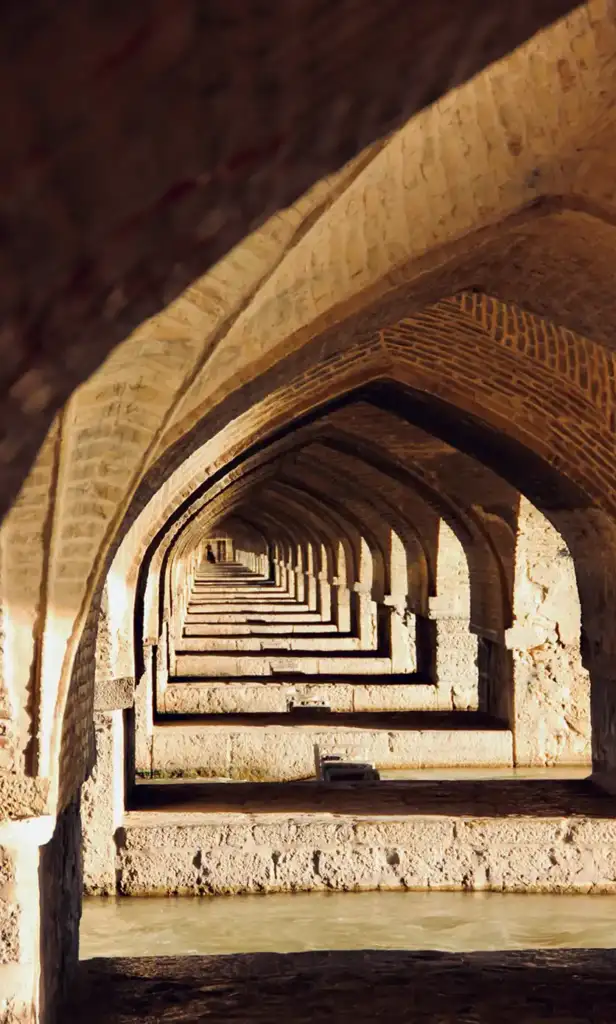
Islamic Era
The Arab conquest in 642 CE kicked off Isfahan’s Islamic era changing the city big time as it became the capital of the Al-Jibal province. Under different dynasties the Buyid and Seljuq, the city thrived. Starting in the 11th century, the Seljuq period saw major building projects and city growth turning Isfahan into a big cultural and economic center. The city hit its peak during the Safavid dynasty under Shah Abbas the Great, who made Isfahan his capital in 1598. People often call this time the city’s golden age when many of Isfahan’s most famous buildings went up.
Modern Age
In recent times, Isfahan saw ups and downs. The Afghan attack in 1722 hit the city hard, but it bounced back when Reza Shah Pahlavi ruled in the early 1900s. Now, Isfahan is a hub for industry. It makes top-notch carpets, cloth, steel, and local foods. These products play a big role in boosting its economy.
People still flock to Isfahan to see its past and soak in its culture. Scholars too, find the city fascinating.
Architecture and Urban Planning
Seljuq Influence
The arrival of the Seljuq Turks in 1038 had a significant impact on Isfahan Iran’s architectural scene. This era began a distinct Iranian eastern Islamic architectural style. The Seljuqs introduced new structural concepts and spatial ideas, which played a vital role in forming Isfahan’s architectural legacy. The transformation of an existing hypostyle mosque into the impressive four-iwan Great Friday Mosque (Masjid-i Jami) stands out as a prime illustration of this influence. The Seljuqs brought the iwan, a large vaulted area open on one side, into mosque design. This addition represented absolute power and connected earthly leadership to divine authority.
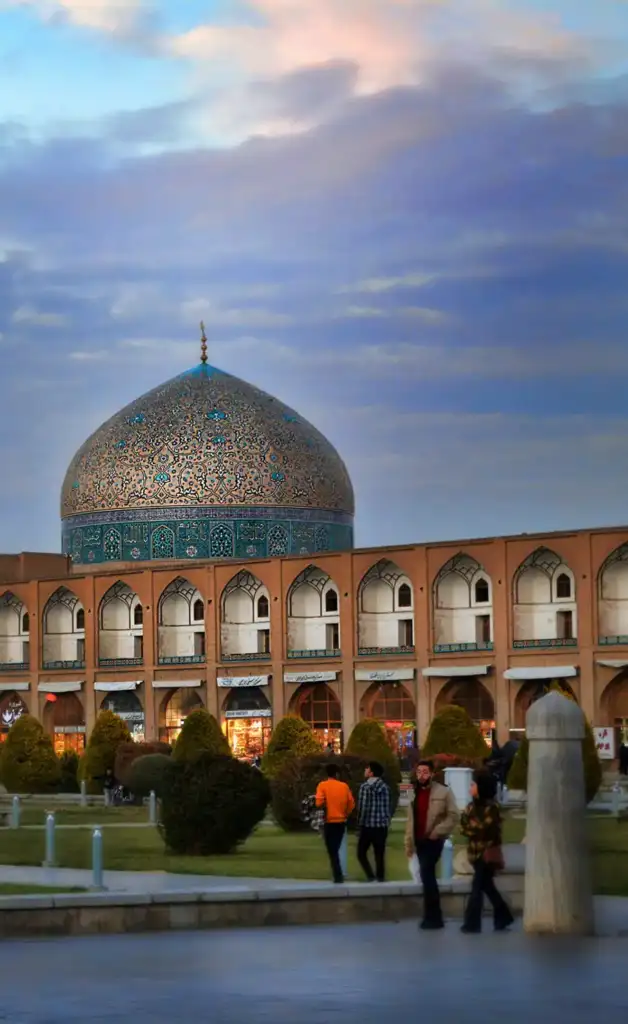
Safavid Developments
Almost 400 years after the Seljuqs, Shah Abbas I picked Isfahan to be the Safavid capital in 1598. This choice kicked off a new period of building and city growth. At first, Shah Abbas worked to connect his rule to existing power symbols by fixing up Seljuq buildings. But his later projects involved building a new city south of the old city center. This new area featured the stunning Maidan-i Naqsh-i Jahan (Design of the World Maidan). People planned this new city center on straight grids. Unlike the old city’s layout, it didn’t face Mecca. The new maidan became a space that brought together all parts of Safavid rule—worship, remembrance, government, and trade.
Notable Structures
The Safavid era’s architectural beauty shines through several key buildings around the Maidan-i Naqsh-i Jahan. On the western side of the maidan, the Imperial Palace stands out with its grand entrance, the Ali Qapu. The Shah Mosque and the Mosque of Sheikh Lutfallah also play a big role in shaping the new city’s religious and cultural scene. The Shah Mosque took over from the Great Friday Mosque as Isfahan’s main religious hub. It boasts a classic four-iwan courtyard and a tall domed room. The Mosque of Sheikh Lutfallah is special because it mixes different architectural styles and uses lots of colorful tiles. This mosque shows how color became a key part of Iranian architecture.
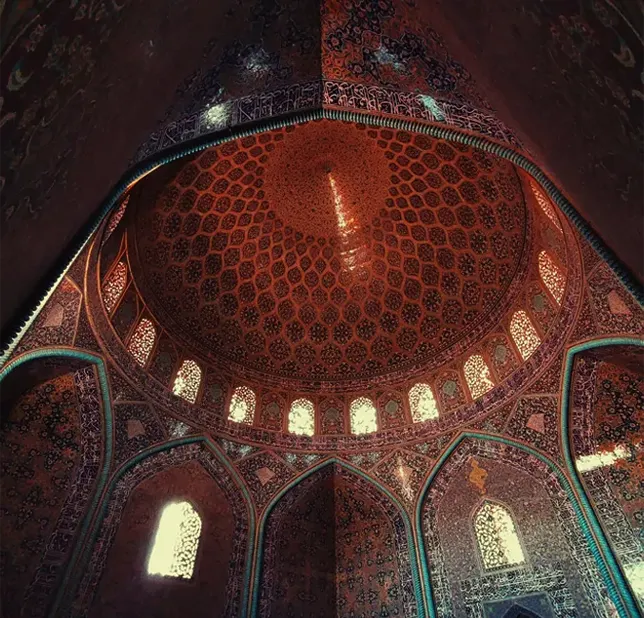
Economic Development
Silk Road Influence
Isfahan’s location at the intersection of Asia’s trade routes boosted its economic importance. Shah Abbas I saw this potential and redirected the Silk Road through Isfahan when he ruled from 1587 to 1629. This decision turned the city into a key center in the Eurasian trade network. The move helped the flow of goods like silk and porcelain and brought Iran more into the global market, improving its economic position.
Trading and Commerce
Trade has played a key role in Isfahan’s expansion mainly during the Safavid period when the city thrived as a diverse hub of commerce. The building of the Maidan-i Naqsh-i Jahan, a huge town square, in this time captured the city’s business and political spirit. It featured the Qaisariya Bazaar, which housed royal factories and acted as a center for economic action.
The city’s status as a busy spot for trade and diplomatic talks was clear from the mix of European traders, missionaries, and various cultural impacts.
Modern Industry
As the 20th century began, Isfahan, Iran saw a big uptick in industry in textiles. This growth was so notable that people started calling it the “Manchester of Persia.” In 2001, the city took a step towards becoming a hub for knowledge with the creation of the Isfahan Scientific and Research Town. This move has had a big impact on Iran’s drug-making and industrial sectors. Today, Isfahan’s industries cover a wide range, from making steel to high-tech fields like putting together aircraft and nuclear sites. This mix shows that the city has a strong base for its economy, which keeps getting better.
Cultural Heritage
Persian Architecture
Isfahan Iran’s cultural legacy shows up clearly in its buildings, which have changed over many years. The city’s architecture in the Safavid time, stands out for its detailed colorful tiles that cover mosque and palace insides. These tiles show off complex flower and shape patterns along with Arabic writing often quoting the Quran. Good examples are the round domes with icicle-like designs and pointed arches that define Persian buildings from the early modern time. This style of building not displays the beauty tastes of that era but also has an impact on technical progress. For instance, the double-shell ribbed domes in the Masjed-e Jāmé represent a big step forward in Islamic building design.
Art and Literature
Isfahan’s position as a cultural center shines through its long-standing art and literature traditions during the Safavid era when the city served as Persia’s capital. The royal family’s support of the arts, including their requests for illustrated manuscripts and backing of painters, played a key part in the growth of Safavid art. This period gave birth to a unique Isfahani painting style known for its elegant court figures and detailed flower and bird patterns often shown in small-scale paintings. The craft of making books and illustrating manuscripts also took center stage, with the royal workshop creating beautiful works that people valued both at home and abroad.
Craftsmanship
The craftspeople of Isfahan show their skills in more than just buildings and paintings. They make lots of traditional items that families have been creating for years. These include fabrics, metal things, wood stuff, pottery, and objects with tiny pieces put into them. People make these in different places, from shops in the market to small homes in the countryside. In the 1960s more people started buying these handmade items.
Locals wanted them, and so did visitors from other places. This kept the old ways of making things alive. Two crafts that stand out are Minakari and Khatam-kari. Minakari is about putting colorful glass-like coatings on metal. Khatam-kari makes exact patterns with shapes using different materials like wood and metal. These crafts show off Isfahan’s art history and also help the city make money because tourists love to see them.
Prominent Landmarks
Naqsh-e Jahan Square
Naqsh-e Jahan Square also called Imam Square, sits in the heart of Isfahan Iran.
Shah Abbas of the Safavid dynasty built this square between 1598 and 1629. It ranks among the world’s biggest city squares and showcases Iranian and Islamic design at its best. Important buildings encircle this square, including the Shah Mosque, Ali Qapu Palace, and the Sheikh Lotfollah Mosque. Since Safavid times, people have gathered here for social events and ceremonies. Today, it continues to host public celebrations and festivals.
Shah Mosque
The Shah Mosque sits on the south side of Naqsh-e Jahan Square. People see it as a prime example of Persian architecture. It goes by other names too – Imam Mosque or Royal Mosque. Shah Abbas ordered its construction in 1611. The mosque shows off bright blue domes and detailed tile designs. These elements highlight the peak of Islamic architecture in Iran. Inside, you’ll find a big courtyard with four iwans (open rooms with arched roofs) around it. The main dome catches the eye with its colorful tiles and written decorations.
Ali Qapu Palace
Ali Qapu Palace stands on the west side of Naqsh-e Jahan Square. It played a key role as the royal home and main government hub during the Safavid period. Shah Abbas I built the palace in the early 1600s. People admire its design and the beautiful art in its rooms. The building has six levels linked by a winding staircase. The top floor houses the well-known music room where royal musicians played for the king’s family. From Ali Qapu’s balcony, you can see the whole square. This view shows off the splendor of Safavid building style.
Challenges and Preservation Efforts
Urban Development Issues
Isfahan struggles with big city growth problems just like many other places around the world. Studies show that Isfahan’s urban growth isn’t sustainable now or in the future. Right now, 33% of Isfahan’s city areas are poor or very poor, while 30% are rich or very rich. The city’s growth plan makes this gap even worse, with fewer well-off areas expected later on. This points to a change in city planning from focusing on services to housing, which might not help the city grow in a good way or spread public services .
Conservation Projects
Preserving Isfahan’s cultural heritage is essential, but it faces hurdles due to money problems made worse by sanctions from other countries. These cash shortages make it tough for the Cultural Heritage Organization to fund projects to protect old sites. Take the Meydan-e Atiq project update as an example. It shows we need to fix structure, safety, and design issues without damaging the site’s history. The project wants to make sure people can walk around and fit in with the local city layout showing it cares about mixing new needs with keeping old things safe.
Community Initiatives
Getting the community involved plays a crucial role in keeping Isfahan’s rich cultural heritage alive. Including the buffer zone in the Isfahan Master Plan marks a good move to protect the city’s historic sites. But we need a full plan to conserve and manage these sites that takes into account what the community thinks and has strong ways to keep an eye on urban growth.
These efforts should aim to strike a balance between growth and keeping our heritage safe, making sure Isfahan Iran’s historic and cultural core stays intact for our kids and grandkids.
FAQs
Isfahan is nicknamed “Half of the World” (Nesf-e-Jahan) because of its extraordinary cultural and architectural heritage. During the Safavid era, it was one of the largest and most prosperous cities in the world, featuring stunning mosques, palaces, bridges, and gardens that symbolized a world of art, beauty, and innovation.
Some of Isfahan’s most iconic landmarks include:
- Naqsh-e Jahan Square: A UNESCO World Heritage Site, surrounded by the Shah Mosque, Sheikh Lotfollah Mosque, and Ali Qapu Palace.
- Si-o-Se Pol: The famous 33-arch bridge.
- Khaju Bridge: Known for its architectural elegance and function as a social hub.
- Chehel Sotoun Palace: A beautiful Safavid-era pavilion.
- Vank Cathedral: A stunning Armenian church in the Jolfa district.
Isfahan is renowned for its:
- Islamic architecture: Its mosques, minarets, and domes are considered masterpieces of Persian-Islamic design.
- Handicrafts: Famous for Persian carpets, miniature paintings, enamel work (minakari), and marquetry (khatamkari).
- Cuisine: Dishes like beriyani (a local lamb dish) and gaz (Persian nougat) are specialties.
- Historical significance: It was the capital of the Safavid Empire and a major cultural and trade hub.
The best time to visit Isfahan is during spring (April-May) and autumn (September-October) when the weather is mild and pleasant. Summers can be quite hot, and winters are relatively cold, but both seasons are less crowded.
Getting to Isfahan:
You can reach Isfahan by air via Isfahan International Airport, by train, or by bus from major cities like Tehran and Shiraz.
Getting around:
Public transport includes buses and taxis. For tourists, walking around historical areas or using ride-hailing apps is convenient and efficient.
